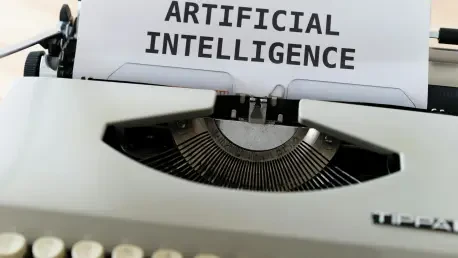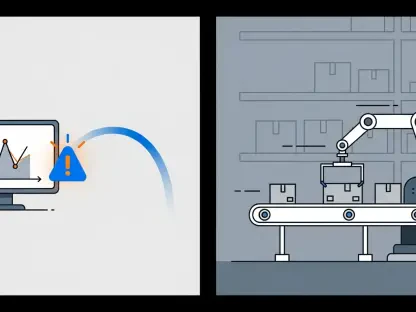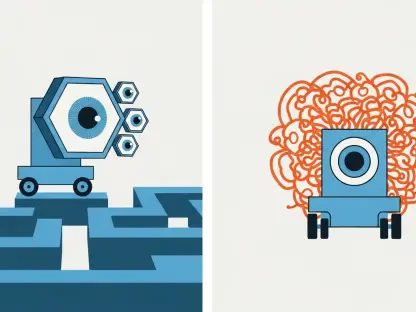In the fast-paced realm of mechanical engineering, where precision and innovation are paramount, a revolutionary tool has emerged to redefine the boundaries of what’s possible: MechRAG, a multimodal AI system tailored specifically for the intricate demands of this field. This advanced large language model (LLM) seamlessly blends natural language processing (NLP) with computer vision, enabling it to interpret not only textual data but also complex visual inputs such as engineering diagrams and schematics. MechRAG stands as a beacon of progress, offering a glimpse into a future where human expertise and artificial intelligence collaborate to solve the most challenging problems. Unlike traditional AI confined to singular data types, this system mirrors the way engineers analyze technical information, bridging theoretical concepts with practical application. Its arrival marks a pivotal moment, sparking enthusiasm about how it can streamline workflows, enhance decision-making, and push the envelope of creativity in mechanical engineering.
Unveiling the Multimodal Edge
MechRAG’s strength lies in its multimodal architecture, a sophisticated blend of visual and textual data processing that captures the nuanced spatial and geometric aspects of engineering designs. Traditional AI models, often limited to text-based inputs, fall short when faced with the visual complexity of blueprints or technical schematics. MechRAG, however, excels by analyzing diagrams alongside written content, effectively emulating the analytical prowess of seasoned engineers. This capability ensures that insights provided are not only relevant but also deeply rooted in the visual context of the problem at hand. For professionals navigating intricate projects, this translates to a tool that can dissect and interpret data with a level of detail previously unattainable, making it a game-changing asset in the quest for precision and innovation within the discipline.
Another key pillar of MechRAG’s functionality is its Retrieval-Augmented Generation (RAG) framework, which integrates real-time data retrieval from expansive engineering databases with generative language modeling. This hybrid structure allows the system to pull from a vast repository of technical knowledge, ensuring that every response or suggestion is grounded in factual accuracy. Whether it’s offering design enhancements or clarifying complex principles, MechRAG acts as a virtual expert, ready to assist at any stage of a project. This dual mechanism sets it apart from conventional models, providing actionable recommendations that engineers can trust, ultimately saving time and reducing the risk of oversight in critical tasks.
Tailored Expertise for Engineering Challenges
What distinguishes MechRAG from broader AI platforms is its specialized training on mechanical engineering resources, encompassing industry standards, technical manuals, and scholarly literature. This focused approach embeds an in-depth understanding of essential concepts like material properties, physical laws, and manufacturing techniques, ensuring that its outputs are not only accurate but also highly relevant to the field. For engineers working on high-stakes initiatives, where even minor errors can have significant consequences, MechRAG offers a level of reliability that generic AI systems cannot match. It serves as a dependable partner, capable of addressing the unique challenges of the discipline with precision and insight, thereby enhancing confidence in decision-making processes.
Moreover, this domain-specific expertise allows MechRAG to tackle intricate problems with a nuanced perspective that aligns with real-world engineering practices. It can interpret the subtleties of material behavior under stress or suggest manufacturing optimizations based on established protocols, delivering solutions that are both practical and innovative. This targeted knowledge base empowers professionals to push beyond conventional boundaries, exploring new design possibilities while maintaining adherence to critical standards. As a result, MechRAG becomes an indispensable tool for those seeking to balance creativity with technical rigor, ensuring that every project benefits from a foundation of trusted, specialized intelligence.
Redefining Design and Problem-Solving
MechRAG’s practical applications span a wide array of engineering tasks, from decoding detailed blueprints to identifying discrepancies in assemblies and recommending optimized design solutions. By leveraging advanced attention mechanisms, it hones in on critical elements within both visual and textual data, ensuring that no vital detail is missed. This meticulous approach proves invaluable when reviewing intricate designs or troubleshooting multifaceted systems, where overlooking a single factor can lead to costly errors. Early pilot programs have demonstrated remarkable time savings in prototype evaluations, allowing engineers to iterate and refine their work with unprecedented speed and accuracy, thus accelerating the path from concept to completion.
Beyond error detection, MechRAG enhances the creative process by proposing design alternatives that optimize performance and efficiency. It analyzes existing schematics and suggests modifications grounded in technical feasibility, often uncovering solutions that might not be immediately apparent to human engineers under time constraints. This ability to augment human ingenuity with data-driven insights fosters a collaborative environment where innovation thrives. For teams facing tight deadlines or resource limitations, MechRAG offers a competitive edge, enabling them to deliver high-quality outcomes without sacrificing thoroughness, thereby transforming the way design challenges are approached in the industry.
Shaping the Future of Engineering Education
MechRAG extends its transformative impact into the realm of education, serving as an interactive, context-aware assistant for students and apprentices in mechanical engineering. By providing tailored explanations and real-world examples, it simplifies complex theories and design processes, making them more accessible to learners at all levels. This personalized approach adapts to individual needs, offering clarity on topics that might otherwise seem daunting, such as stress analysis or fluid dynamics. As a result, MechRAG creates an engaging learning environment that encourages deeper understanding and practical application, potentially reshaping how foundational skills are developed in aspiring engineers.
Additionally, the system’s ability to simulate real-world engineering scenarios provides an immersive experience that bridges the gap between classroom theory and industry practice. Students can interact with MechRAG to explore design challenges, test hypotheses, and receive immediate feedback, fostering critical thinking and problem-solving skills. This hands-on learning tool not only enhances comprehension but also prepares the next generation of engineers for the complexities of modern projects. By democratizing access to high-level technical guidance, MechRAG stands to revolutionize educational methodologies, ensuring that future professionals are well-equipped to meet the demands of an ever-evolving field.
Expanding Horizons with Scalable Innovation
Looking to the future, MechRAG’s modular design paves the way for scalability, with promising integrations such as real-time sensor data for predictive maintenance and anomaly detection in mechanical systems. Such advancements could enable the system to monitor equipment performance and anticipate failures before they occur, minimizing downtime and enhancing safety. Compatibility with emerging technologies like CAD software and augmented reality further amplifies its potential, envisioning smart engineering ecosystems that adapt and optimize continuously through AI support. These developments hint at a landscape where every phase of the engineering lifecycle benefits from intelligent assistance, driving efficiency to new heights.
Furthermore, the scalability of MechRAG opens doors to cross-disciplinary applications, where it could collaborate with other specialized AI systems to address multifaceted challenges in areas like sustainable energy or aerospace. By integrating diverse data streams and providing cohesive insights, it could facilitate holistic solutions that transcend traditional engineering silos. This forward-thinking adaptability ensures that MechRAG remains relevant as technological frontiers expand, offering a flexible framework for innovation. As these possibilities unfold, the system is poised to become a cornerstone of next-generation toolchains, shaping a more interconnected and responsive approach to engineering problem-solving.
Balancing Progress with Responsibility
As MechRAG’s capabilities advance, the importance of ethical deployment cannot be overstated, particularly in high-stakes engineering environments where errors carry significant risks. Developers highlight the need for robust verification processes to ensure accuracy, alongside strategies for bias mitigation to prevent skewed outputs. Cybersecurity measures are equally critical to protect sensitive data and maintain trust in the system’s recommendations. These safeguards are essential to uphold the integrity of MechRAG’s applications, ensuring that it serves as a reliable complement to human expertise rather than an unchecked authority in decision-making.
Equally vital is the collaboration across academia, industry, and regulatory bodies to establish guidelines that govern MechRAG’s integration into professional workflows. Such partnerships can address potential challenges, from ensuring equitable access to the technology to preventing over-reliance on AI at the expense of human judgment. By fostering a balanced approach, these efforts aim to maximize the benefits of MechRAG while mitigating risks, creating a framework where innovation and accountability coexist. This commitment to responsible implementation underscores the broader goal of leveraging AI to enhance, rather than replace, the ingenuity and critical thinking that define mechanical engineering.
Reflecting on a Technological Milestone
Looking back, MechRAG emerged as a landmark achievement in mechanical engineering, harnessing the power of multimodal AI to address some of the field’s most pressing obstacles. Its ability to integrate visual and textual data provided unmatched support for design, diagnostics, and education, while its scalable architecture laid the groundwork for future breakthroughs. The system’s impact was evident in the way it reduced design cycles, minimized errors, and enriched learning experiences for aspiring engineers. Yet, its responsible integration into high-stakes settings demanded careful attention to ethical and practical considerations. As MechRAG evolved, it highlighted the potential for seamless collaboration between intelligent systems and human professionals, setting a precedent for progress in mechanical innovation that prioritized both efficiency and integrity.









